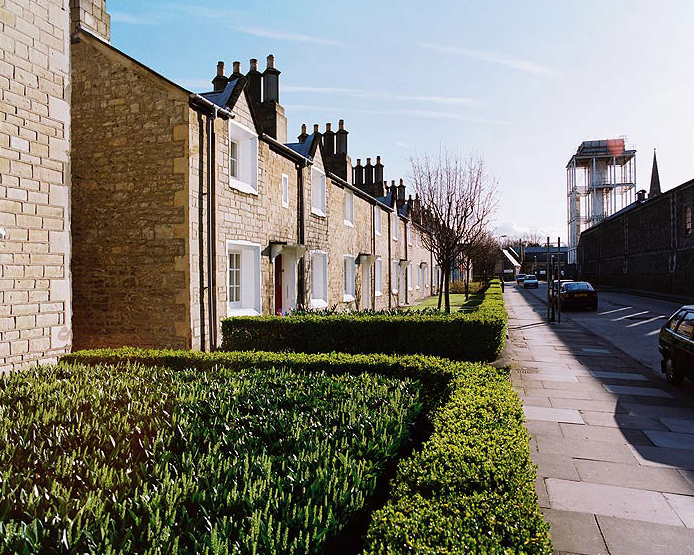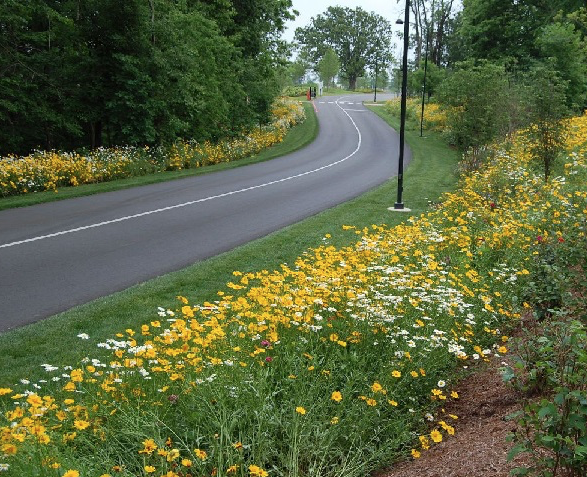Hedging to combat traffic emissions
A University of Surrey study suggests planting a combination of hedges and trees along roadsides can help reduce pollution more effectively than planting trees alone

The hedge could have the edge over the tree when it comes to cutting pollution because hedges bear more relation to human height. Urban planners are being urged to plant hedges, or a combination of trees with hedges, if they're to most effectively reduce people's exposure to pollution from cars in urban areas following research from Surrey University
We know trees are good at absorbing CO2 but our town planners should plant hedges near roads too, say scientists. Researchers from Surrey University's Global Centre for Clean Air Research (GCARE) looked at how three types of road-side planting – trees, hedges, and a combination of trees with hedges and shrubs – affected concentration levels of air pollution. The study used six roadside locations in Guildford as test sites, where the green infrastructure was between 1-2 metres away from the road.
Researchers found roadsides that had only hedges were the most effective at reducing pollution exposure, cutting black carbon (the sooty black material emitted from gas and diesel engines, coal-fired power plants, and other sources that burn fossil fuel) by up to 63 per cent. Ultrafine and sub-micron particles followed this reduction trend, with fine particles (less than 2.5 micrometres in diameter) showing the least reduction among all the measured pollutants. The maximum reduction in concentrations was observed when winds were parallel to the road due to a sweeping effect, followed by winds across the road. The elemental composition of particles indicated an appreciable reduction in harmful heavy metals originating from traffic behind the vegetation.
The hedges-only - and a combination of hedges and trees - emerged as the most effective green infrastructure in improving air quality behind them under different wind directions. Roadsides with only trees showed no positive influence on pollution reduction at breathing height (usually between 1.5 and 1.7m), as the tree canopy was too high to provide a barrier/filtering effect for road-level tailpipe emissions.
According to the UN, more than half of the global population live in urban areas, while this number increases to almost two thirds in the EU, where, according to the European Environmental Agency, air pollution levels in many cities are above permissible levels, making air pollution a primary environmental health risk.
Professor Prashant Kumar, senior author of the study and founding dector of GCARE at Surrey University says air pollution must be controlled and so-called green infrastructure has an important role to play: 'Reducing exposure to traffic emissions in near-road environments has a big part to play in improving health and well-being for city-dwellers.
'Our study shows the important role strategically placed roadside hedges can play in reducing pollution exposure for pedestrians, cyclists and people who live close to roads. Urban planners should consider planting denser hedges, and a combination of trees with hedges, in open-road environments. Many local authorities have, with the best of intentions, put a great emphasis on urban greening in recent years. However, the dominant focus has been on roadside trees, while there are many miles of fences in urban areas that could be readily complemented with hedges, with appreciable air pollution exposure dividend. Urban vegetation is important given the broad role it can play in urban ecosystems – and this could be about much more than just trees on wide urban roads.'
Surrey University's research work is carried out under the umbrella of iSCAPE (Improving Smart Control of Air Pollution in Europe) a project funded by the European Community's H2020 Programme

